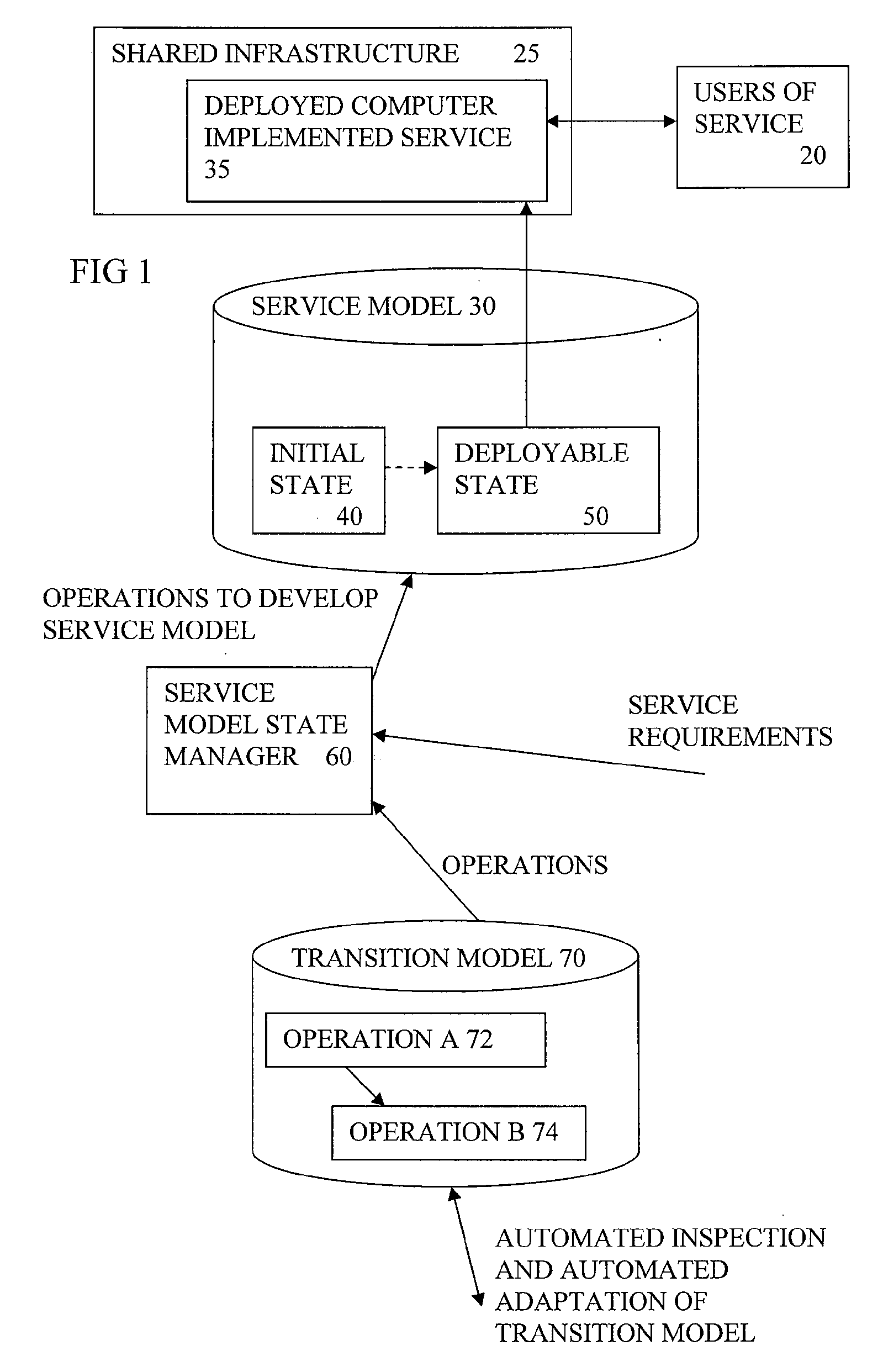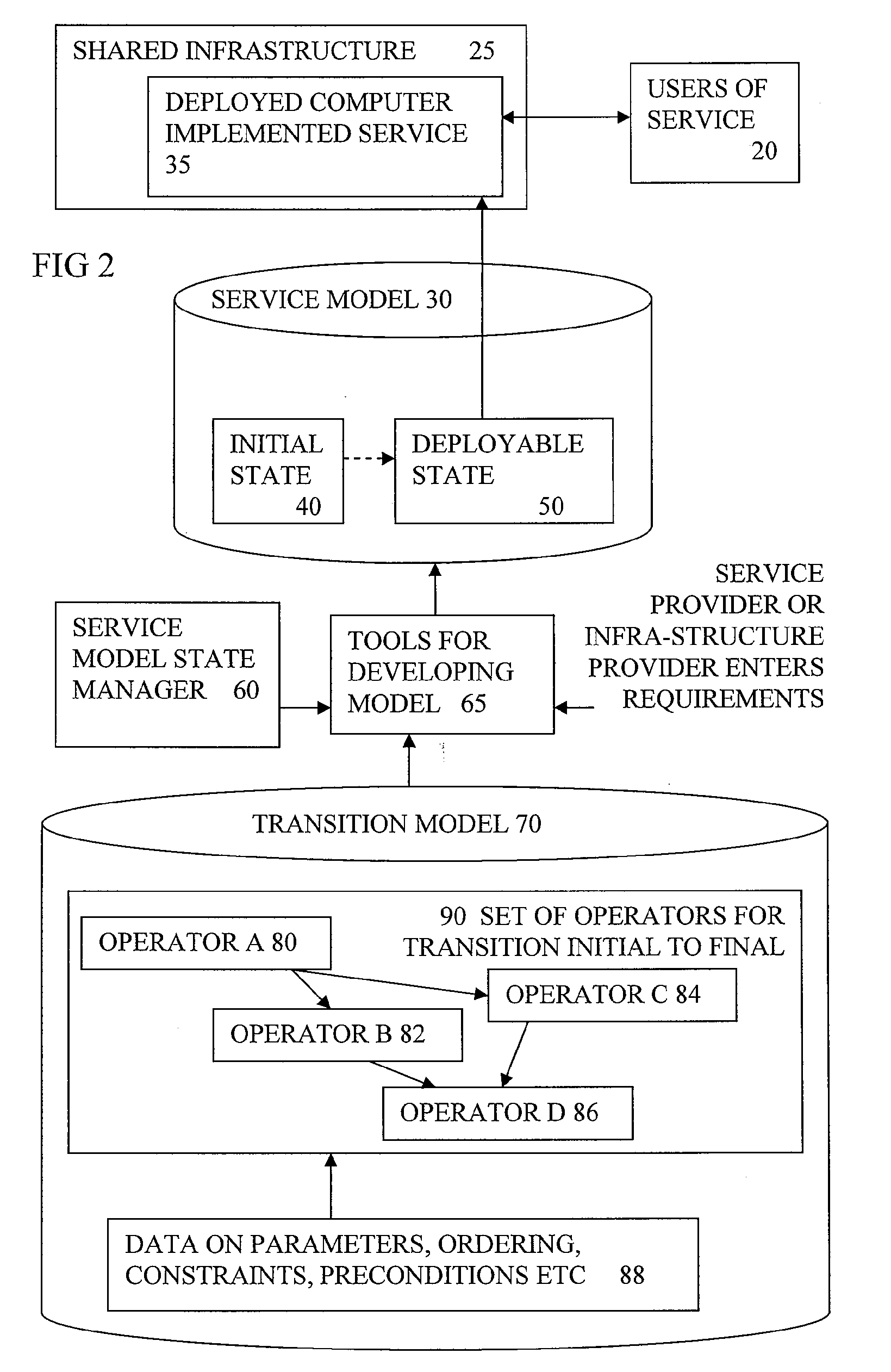Automated Lifecycle Management of a Computer Implemented Service
a lifecycle management and computer technology, applied in the field of automated lifecycle management of computer implemented services, can solve the problems of difficult management of physical it (information technology) infrastructure, difficult manual changes, high cost, etc., and achieve the effect of facilitating more automation of service development, reducing development costs, and being easy to manag
- Summary
- Abstract
- Description
- Claims
- Application Information
AI Technical Summary
Benefits of technology
Problems solved by technology
Method used
Image
Examples
Embodiment Construction
Definitions:
[0031]“lifecycle” is defined as encompassing some or all stages of development of a service such as requirements collection, design, deployment, testing and run time management. Deployment is the process of instantiating and reifying a design of a service so that it can be made available to users.
[0032]“lifecycle management” can encompass management of part or all of the lifecycle.
[0033]“user” of a service can encompass a human user or another service.
[0034]“requirements” can include functional and non-functional requirements for a given service, and can alter during the lifecycle.
[0035]“model” is intended to encompass any kind of representation of a design and can encompass data structures, or code or combinations of these, for example, and can be made up of sub models located at different locations for example.
[0036]“state manager” is intended to encompass any kind of software, service, tool or process or combination of these, for managing the transition to another sta...
PUM
 Login to View More
Login to View More Abstract
Description
Claims
Application Information
 Login to View More
Login to View More - R&D
- Intellectual Property
- Life Sciences
- Materials
- Tech Scout
- Unparalleled Data Quality
- Higher Quality Content
- 60% Fewer Hallucinations
Browse by: Latest US Patents, China's latest patents, Technical Efficacy Thesaurus, Application Domain, Technology Topic, Popular Technical Reports.
© 2025 PatSnap. All rights reserved.Legal|Privacy policy|Modern Slavery Act Transparency Statement|Sitemap|About US| Contact US: help@patsnap.com



